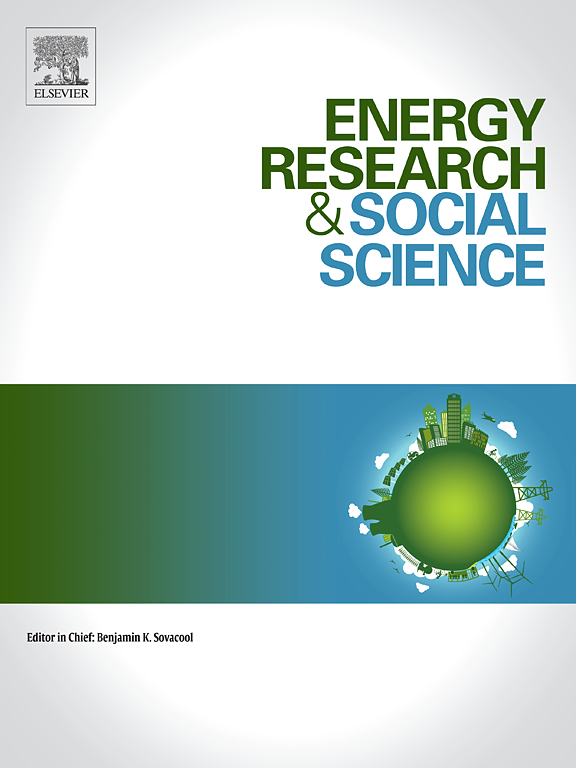减轻邻避对可再生能源的影响:来自加泰罗尼亚调查干预的实验证据
IF 7.4
2区 经济学
Q1 ENVIRONMENTAL STUDIES
引用次数: 0
摘要
原则上,太阳能和风能发电厂的部署得到了广泛的支持,然而,当这些项目出现在他们的附近时,当地社区往往会抵制——这种模式通常被称为邻避效应(不在我的后院)。这一矛盾给脱碳工作带来了重大挑战。在这项研究中,我们借鉴了开放式回应和两个基于调查的实验设计,这些实验设计嵌入了在加泰罗尼亚进行的一般代表性民意调查。2024年气候晴雨表(N = 1650)通过开放式问题和关于项目规模和技术类型如何影响当地支持的调查实验,捕捉公众对可再生能源的自发看法。第28次综合调查(N = 1200)包括另一个量化邻避效应的实验,并测试框架策略(如强调环境效益或经济激励(如市政减税))是否减少了对地方项目的反对。我们的研究结果证实了邻避效应对可再生能源的影响,其中景观因素是一个关键因素。然而,关于气候效益和当地经济收益的有针对性的沟通,以及实施较小规模的项目,大大减少了阻力。这些结果为政策制定者和开发商提供了可行的策略,以减少当地的反对意见,从而促进可再生能源基础设施的扩张。本文章由计算机程序翻译,如有差异,请以英文原文为准。
Mitigating the NIMBY effect on renewable energy: Experimental evidence from survey-based interventions in Catalonia
The deployment of solar and wind power plants is widely supported in principle, yet local communities often resist when such projects appear in their immediate vicinity—a pattern commonly referred to as the NIMBY (Not in My Back Yard) effect. This contradiction poses significant challenges for decarbonization efforts. In this study, we draw on open-ended responses and two survey-based experimental designs embedded in general representative public opinion surveys conducted in Catalonia. The 2024 Climate Barometer (N = 1650) captures spontaneous public perceptions of renewable energy through open-ended questions and a survey experiment on how project scale and technology type affect local support. The 28th Omnibus Survey (N = 1200) includes another experiment that quantifies the NIMBY effect and tests whether framing strategies—such as highlighting environmental benefits or economic incentives (e.g., municipal tax reductions)—reduce opposition to local projects. Our findings confirm the presence of a NIMBY effect on renewables, with landscape considerations emerging as a key factor. However, targeted communication about climate benefits and local financial gains, as well as implementing smaller-scale projects, significantly reduces resistance. These results provide policymakers and developers with actionable strategies to diminish local opposition, thereby facilitating the expansion of renewable energy infrastructure.
求助全文
通过发布文献求助,成功后即可免费获取论文全文。
去求助
来源期刊

Energy Research & Social Science
ENVIRONMENTAL STUDIES-
CiteScore
14.00
自引率
16.40%
发文量
441
审稿时长
55 days
期刊介绍:
Energy Research & Social Science (ERSS) is a peer-reviewed international journal that publishes original research and review articles examining the relationship between energy systems and society. ERSS covers a range of topics revolving around the intersection of energy technologies, fuels, and resources on one side and social processes and influences - including communities of energy users, people affected by energy production, social institutions, customs, traditions, behaviors, and policies - on the other. Put another way, ERSS investigates the social system surrounding energy technology and hardware. ERSS is relevant for energy practitioners, researchers interested in the social aspects of energy production or use, and policymakers.
Energy Research & Social Science (ERSS) provides an interdisciplinary forum to discuss how social and technical issues related to energy production and consumption interact. Energy production, distribution, and consumption all have both technical and human components, and the latter involves the human causes and consequences of energy-related activities and processes as well as social structures that shape how people interact with energy systems. Energy analysis, therefore, needs to look beyond the dimensions of technology and economics to include these social and human elements.
 求助内容:
求助内容: 应助结果提醒方式:
应助结果提醒方式:


